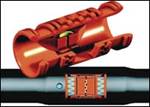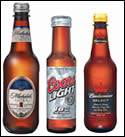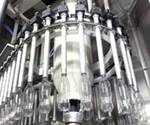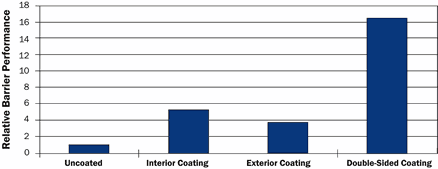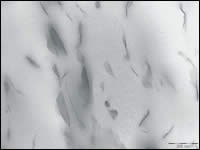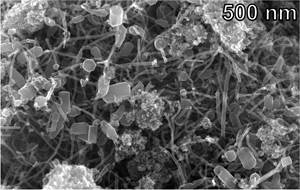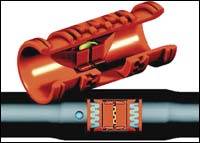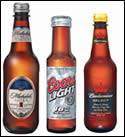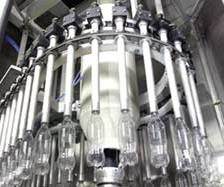New Barrier Options Debut at SPE ANTEC
Innovative barrier technologies to boost the shelf-life of PET bottles were introduced at the May SPE ANTEC 2007 conference in Cincinnati.
Innovative barrier technologies to boost the shelf-life of PET bottles were introduced at the May SPE ANTEC 2007 conference in Cincinnati. Among the new barrier solutions is a new PET nanocomposite that is considered promising for monolayer beer bottles, plus a new coating system that uses plasma as a barrier both inside and outside of PET preforms. Meanwhile, the long-chain branching of polyvinylidene fluoride (PVDF) has resulted in a new generation of materials that for the first time can be extrusion blow molded.
Nanoparticle barrier
Nanocomposites have emerged as a new option for barrier bottles, particularly in blends with barrier materials like MXD6 nylon for use in multilayer PET bottles. ANTEC saw the presentation of a monolayer approach that incorporates PET and layered nanoparticles in a melt compounding process.
Research by the Institute of Agrochemistry and Food Technology in Valencia, Spain, revealed that finely dispersed nanoparticles in small amounts (1% to 5% by volume) don’t adversely affect the toughness or transparency of PET. Unique here is the use of a commercially available organomodified montmorillonite nanoclay that is FDA food compliant. The nanoadditive, called Nanoter 2000, is supplied by a Spanish spin-off company called NanoBioMatters S.L. in Valencia. Approximately 24 grades in powder and masterbatch form are supplied by NanoBioMatters from a 5.5-million-lb/yr plant in Valencia.
Average particle size is about 1 to 3 microns (3000 nanometers) thick and 250 to 1000 nanometers (nm) long. Tests reportedly show homogeneous distribution of the nanoclay in PET and good interfacial adhesion. As a result, oxygen, water, and aroma barrier is two to six times that of straight PET, according to Jose Maria Lagaron, research scientist at the Institute and a founder of NanoBioMatters. In addition, the glass-transition temperature (Tg) rises by 3° C and crystallinity increases slightly with the addition of Nanoter.
The PET nanocomposite is being tested in Europe in beer bottles and small (0.6L) carbonated soft-drink containers. There are no commercial applications to date. Additive maker ColorMatrix Europe Ltd. in the U.K. is working to develop masterbatches for bottles. Meanwhile, Klockner Pentaplast in Germany is developing multilayer films of PET nanocomposites for flexible packaging.
New twist on coatings
A new development in barrier coatings comes from the Institute for Plastics Processing (IKV) at RWTH Aachen University in Germany. The IKV’s new double-sided coating system applies a 20- to 150-nm barrier layer to both the interior and exterior of PET bottles. It is said to offer 16 times the CO2 barrier of uncoated PET and five times the barrier of plasma coatings on just the interior or exterior of a bottle.
The IKV’s 20-yr patent on the original plasma-enhanced chemical vapor deposition (PECVD) technology recently expired, according to Dirk Binkowski, an IKV technical specialist. That interior coating system was licensed to Sidel, which commercialized it as the Actis system. The IKV also developed a similar system to apply an exterior plasma coating.
The IKV now claims greater barrier improvement for PET bottles with its double-sided system. In a prototype version, PET bottles are held in a gas-tight socket and treated at low pressure (1450 to 5800 psi). The gas mixture is fed in and microwave radiation is transmitted from a hollow wave guide to an internal antenna (for an interior coating) or toward the outside of the bottle from the surrounding slots in the wave guide. The plasma ignites in a thin layer near the bottle wall. Preliminary testing shows no obstacles to recycling the plasma-coated PET bottles.
The double-sided coating system has an output of 10,000 bottles/hr, which is similar to the previous interior and exterior coating systems. Cost is also about the same at $8 to $13 per 1000 bottles. The IKV is building a full-scale coating unit for further validation and licensing may be pursued. Besides PET bottles, target applications included HDPE fuel tanks.
Blow moldable PVDF
Arkema has developed a long-chain-branched version of its Kynar PVDF for extrusion blow molding. Long-chain branching increases melt strength, melt elasticity, and strain hardening compared with linear PVDF. These enhanced properties provide better sag resistance during parison drop and permit higher blow-up ratios while achieving a uniform wall thickness. Arkema said the material was developed in response to market demand for blow molded containers that are chemically resistant and weatherable.
Due to its typically linear molecular structure, PVDF has historically found limited success in blow molding. Viscosity could be controlled only by adjusting molecular weight and therefore, a balance between low viscosity for ease of processing and high viscosity for sag resistance has been difficult to achieve, according to senior research scientist Nafaa Mekhilef.
Forming the parison has been the key hurdle in blow molding PVDF and other engineering resins due to excessive sag and low die swell. “Higher sag resistance in this new grade opens up a larger processing window from the extruder to the mold,” says Lotfi Hedhli, senior research scientist. Arkema reports that the new material’s die swell is twice that of previous versions while melt strength can be four times higher.
The new blow moldable PVDF is slated for commercialization in the fall. There are no commercial applications yet but Arkema is targeting 1- to 2-gal chemical storage containers. Other long-chain-branched grades are available for blown film and thermoforming.
Related Content
Research Suggests Path From Waste Plastics to High Value Composites
Flash joule heating could enable upcycling of waste plastic to carbon nanomaterials.
Read MoreRead Next
Nanocomposites Do More With Less
For skeptics who may doubt that nanocomposites have yet proven themselves commercially viable materials, last year’s Nanocomposites 2005 Conference in San Francisco presented plenty of evidence that “nanos” are beginning to live up to their promise.
Read MoreBarrier Bottle Technologies Square Off
With single-serve containers raising shelf-life demands, packagers are seeking the barrier with the best cost-performance for PET bottles. Multilayer seems to have the upper hand, but monolayer, coating, and oxygen-scavenger technologies have all won niches.
Read MoreBarrier PET Bottles
No Breakthrough in Beer, But Juice & Soda Surge Ahead
Read More
